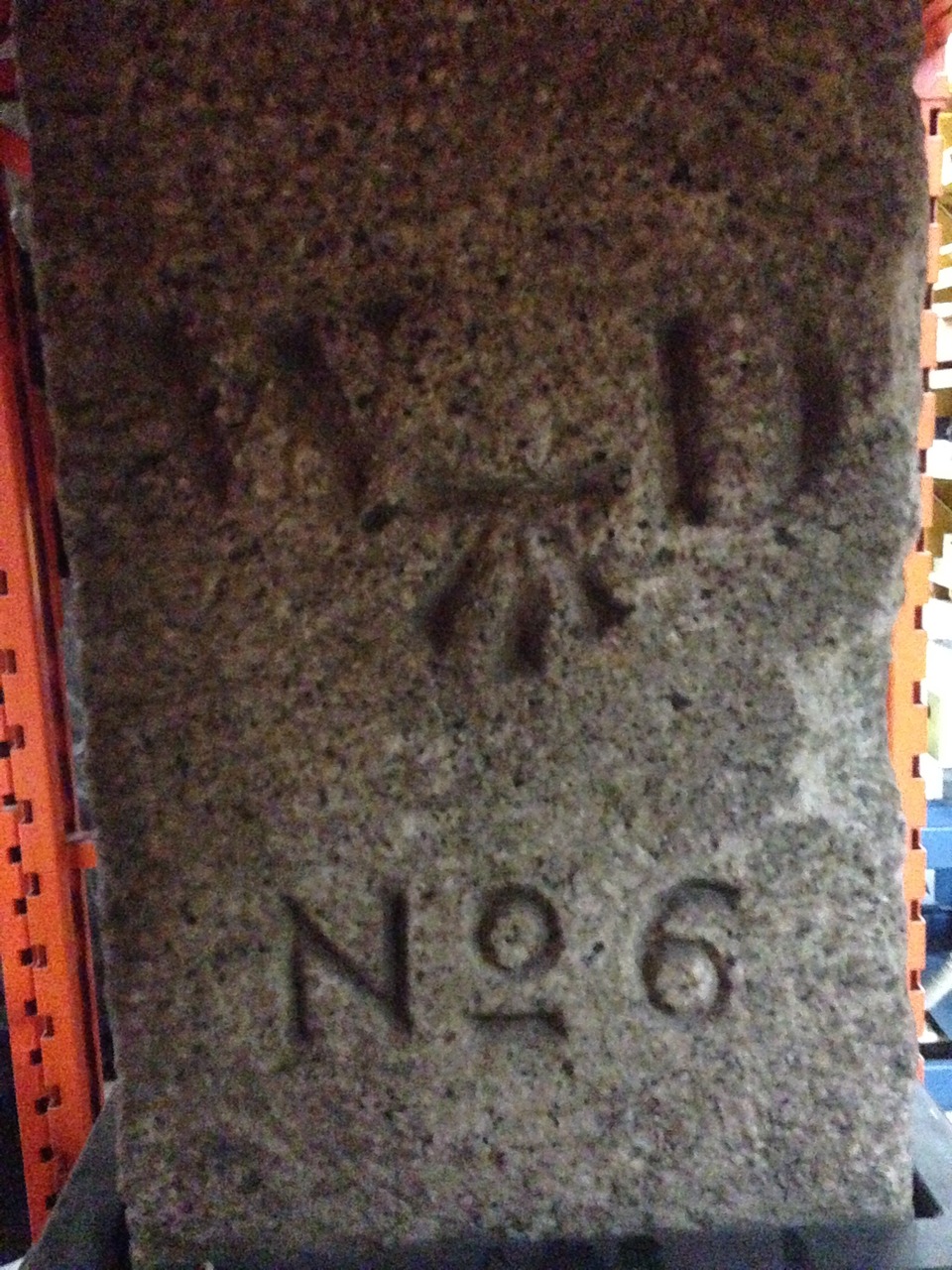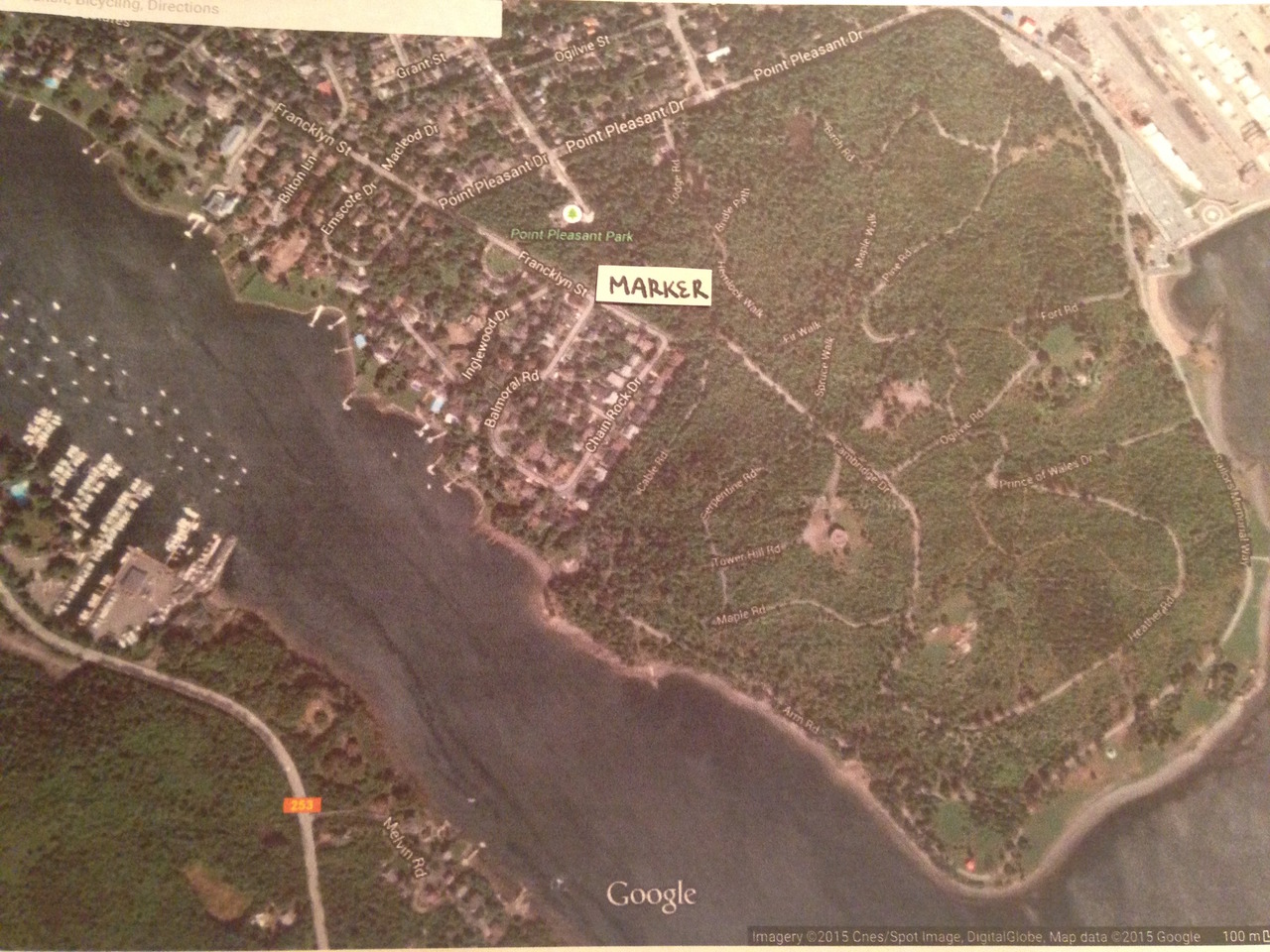Artifact: Marking a Boundary
Unlocking the secrets of this artifact requires looking at some of the physical clues on the monument itself. The marker’s material and markings take us back to British North American History and the defence of the Halifax Harbour.
This survey marker is made of granite: a durable stone resistant to damages caused by the elements. This particular monument was in Point Pleasant Park, right on the ocean, therefore it was important for this monument to be resistant to high winds and precipitation coming through at all times of the year.
The markings on the monument help us understand another reason behind its material composition. The marking “W.D.” can be found on all four sides of the monument. “W.D.” stands for “War Department.” In fact, as we have seen, defence of the Halifax harbour was a key concern for the British Military from 1749 to 1867, when Canada could govern itself independently.[1] This monument also has the marking “No. 6”: it is the sixth in a collection of eight survey markers installed in this area in 1895 as part of the British War Department perambulation plan, This perambulation survey sought to officially assert and record the park and the peninsula’s boundaries.[2] Additionally granite is a common material used for most War Department boundary markers throughout North America.[3]
On all sides of the monument we find the marking of a broad arrow. The broad arrow is a symbol that designated it as British governmental property according to the Public Stores Act of Great Britain of 1875.[4]
Canada Lands Surveyor D. K. MacDonald collected the monument in 1965 as he and his team were tasked with resurveying Point Pleasant Park. This particular marker was removed because it was “damaged”.[5] The survey marker was henceforth mounted on a wooden base supported by black metal rods. It has since been a part of the Canadian Landmarks Collection established by Ralph W. Clark in 1952.[6] D. K. Macdonald’s story will be further explained in the next section of this presentation.

